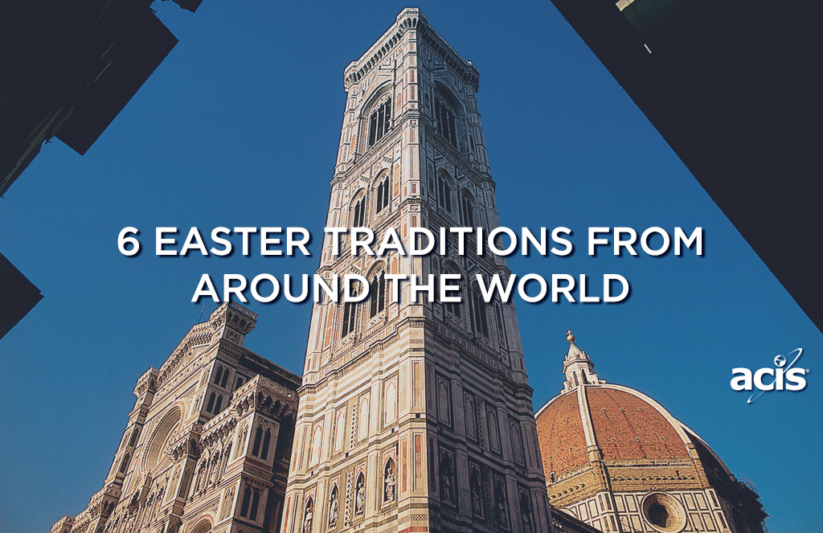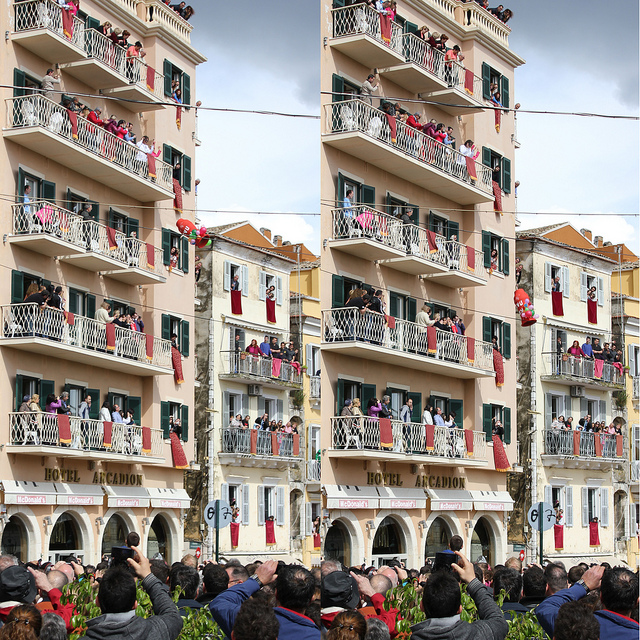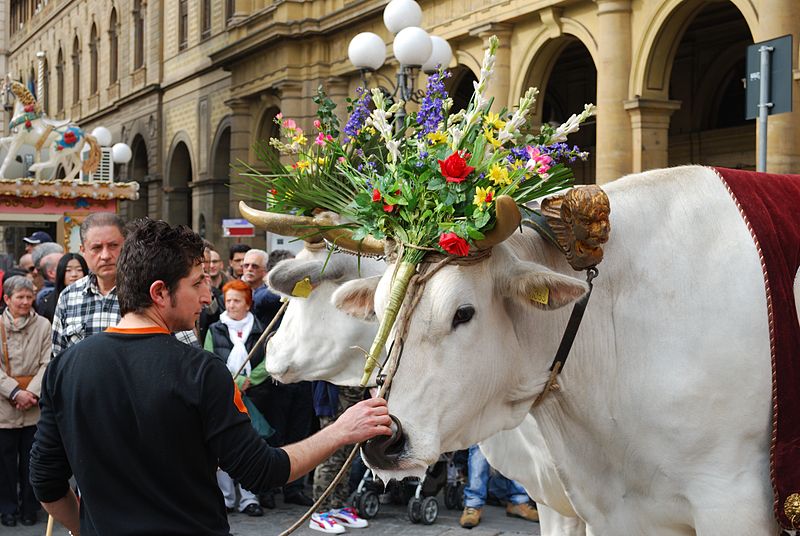6 Easter Traditions Around the World

For Christians around the world, Easter is one of the holiest events of the year, but even if you are not of faith, the accompanying celebrations can be fascinating to behold and a memorable part of a spring time experience abroad.
Here are six unique Easter traditions from across the globe that go far beyond a bunny and a basket!
1. Scoppio del Carro – Florence, Italy
For more then 350 years, Florentines have celebrated Easter with a bang. On Easter Sunday, thousands gather in the Piazza del Duomo to see the famous scoppio del carro, “explosion of the cart.” A 30-foot-tall wagon, still in use from the original 1622 ceremony, travels from Porta a Prato to the Duomo, pulled by a team of flower-laden white oxen. Soldiers, musicians, and participants in 15th century dress accompany the cart to the square, where it is piled high with fireworks. A metal dove is strung along a wire from the cathedral to the pyre, and when the service reaches its peak, the dove is lit with holy Easter fire and sent speeding toward the cart.
Dove + Cart Full of Fireworks = An Exhilarating Pyrotechnic Display!

The explosion certainly has become associated with Easter, but it is also used as a pastoral celebration of the harvest, and many rural villages light their own much smaller carts in the hopes of a good crop yield.
2. Dansa de la mort – Verges, Spain
When the clock strikes midnight on Good Friday, the “dansa de la mort” (“dance of death”) begins. The streets of Verges fill with villagers wearing skeleton costumes and carrying boxes of ashes. One leader of the group carries una guadaña (scythe) and another a banner that reads “time is short.” Dancing to the rhythm of a tambourine in the shape of a cross, the revelers parade through the streets for three hours.
3. Easter Egg Omelet – Haux, France
While many children decorate their Easter eggs with colorful dyes and stamps, the people of Haux France put their eggs in a different basket. Every Easter, this small town southeast of Bordeaux gathers together more than 5000 eggs to create a massive Easter Omelet. The custom stems from the Napoleonic era, when Napoleon himself passed through the village with his army. He was so delighted with his breakfast, he ordered a giant omelet to be made and served to his hungry troops, and the tradition became an Easter fixture.
4. Ritual Ruckus – Corfu, Greece
If you’re in Corfu for Easter, beware of falling kitchenware! Island residents pitch their pots and pans into the streets from balconies and windows. Some say the tradition stems from a historical practice of the Venetians, who would toss out old goods on New Year’s Day, while others believe it is a method of frightening the devil away through pure cacophony.

5. Śmigus–Dyngus – Poland
There’s no faster way to a girl’s heart than by pouring a bucket of water over her head! Such was the initial premise of Poland’s Śmigus–dyngus, or Dyngus Day as it is popularly called in Polish-American communities. This Easter Monday tradition originated with boys dumping water on their sweethearts, but nowadays, girls are just as much in on the action. On “Wet Monday,” an all-out water fight ensues in the streets!
6. A Day for Witches – Finland and Sweden

In Finland, it’s best to keep a basket of treats by your door in case you’re visited by a hungry spirit. On Palm Sunday (or Holy Saturday depending on the region) children adorn themselves in colorful overhead scarves and go door-to-door as friendly witches looking for treats in exchange for good fortune. Waving willow branches, they sing: “Virvon, varvon, tuoreeks terveeks, tulevaks vuodeks; vitsa sulle, palkka mulle,” translating to “I wave a twig for a fresh and healthy year ahead; a twig for you, a treat for me!” Sweden hosts a similar tradition where children dress as witch-like creatures called påskkärringar and trade handmade artwork for chocolate eggs.











